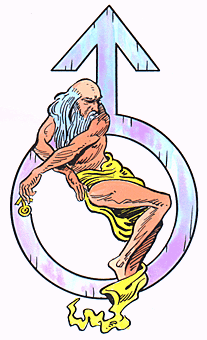Neptune
Hello Science Fairy fans! I have some very bad news this is my last planet in the solar system. But don't worry I'm still going to make
more blogs. Anyway, today we are going to learn about the blue planet that every one loves..........Neptune! Keep reading to learn more about this amazing planet.
more blogs. Anyway, today we are going to learn about the blue planet that every one loves..........Neptune! Keep reading to learn more about this amazing planet.
First things first, we have to know how it got it's name. As you can see Neptune has a blue color. When the Greeks saw the planet for the first time it looked like the ocean so they decide to name it after the god of the sea.
Now lets talk about how Neptune was discovered. He was discovered by Galileo, but he mistakened it for a star. Since it was too far way they had to use math and not science. Crazy right? Anyway the math geniuses that made Neptune a planet are Johann Galle, Urbain Le Veriee and John Couch Adams.
Now we are going to compare and contrast Neptune with the other gas giants.
Compare and Contrast
First we are going to contrast and compare it with Uranus. "Can I help?" asked the Science Cat. What are you doing here? "I'm here to help." said the Scienc car. "No you cant help." "Please, please, please." said the Science cat. OK fine, you can help. But no talking over my show. "Fine. Can I do Neptune." said the Science Cat.
Contrast
Neptune Uranus
Discovered: September 23, 1846 Discovered: March 13, 1781
Compare
"I know a way how they are similar." said the Science Cat. ow How are they similar? "They are similar in theie color, unexplored by human because of there distance, and three is the obvious one they are both maintained with gas." said the Science Cat. You are a very smart Science Cat now get off my blog you are taking over it.
Now we are going to compare it to Jupiter and Saturn. Just to make this blog go faster. "Can I help with this one?' asked Emma the Meap. Emma the Meap what are you doing here? You know what? I am going to get a better security. Anyway since you are here you can help. "Yeah! I'm doing Neptune and Saturn." said Emma the Meap. Sigh, fine. But we really don't need to do Neptune because we all ready did it.
Contrast
Saturn Jupiter
Distance from Sun: 890,700,000 miles Distance from Sun: 483,800,000 miles
Compare
Emma the Meap before you say anything, we are going to do one at a time. First the similarities with Jupiter. I'll go first. They both have dark spots, They both have hydrogen and helium, and they both been discovered by Gailio. Your turn Emma The Meap. "Finally they both have rings, they both obviously have rings, and been discovered by Voyager 2." said Emma the Meap. Thanks for coming. Good bye. "Wait what I still have abunch of similarities." said Emma the Meap. Good bye.
We finally compared and contrast all of the gas giants with Neptune. Now I keep getting comments asking does Neptune have snow or water. Well that's a hard question. "I know the answer." said Sachin. OK this is the last person that is barging in here. Don't even think of it Sachin. OK Amish whats the answer. "Yes, it does snow but its not the snow on earth. The snow wouldn't be made by water." said Amish. Then what would it be made of then? "It would be made of ice of ammonia and methane. Neptune's atmosphere is made of hydrogen and helium so the degree goes down to -200 degrees enough to freeze the entire planet." said Amish. That is very interesting now good bye.
Now we are going to talk about its moons. Neptune has 12 moons. We are going to talk about a special moon. It's name is Triton. Before I start is anyone coming in? Yes or no? OK finally now I can..."Hi Science Fairy."said Alex. UUUUGGGHH Alex! You know what? Just talk about Triton and I'll be back. "Triton is an interesting moon. Did you know that it orbits in the opposite direction of Neptune? Weird right? It was discovered in 1846. It orbits completely in 141 earth days. The last fact I have is the person that discovered it is William Lassell." said Alex. Thank you. Good bye forever!
N more people Sachin. Don't even think of get out of that chair. You too jack. Now everyone is all ways wondering why does Neptune have small dark spots. Well, scientist were looking at Neptune and saw the dark spots disappeared and come back again which was weird. But it proves that its weather is active. It even has a great spot like Jupiter which means it has a strong winds just like Jupiter. The dark spot is named Scooter because around it there are white clouds called cirrus clouds. It is called Scooter because it moves very fast.
That's the end of my blog today. This is The Science Fairy saying keep learning science. Peace.
information links



















